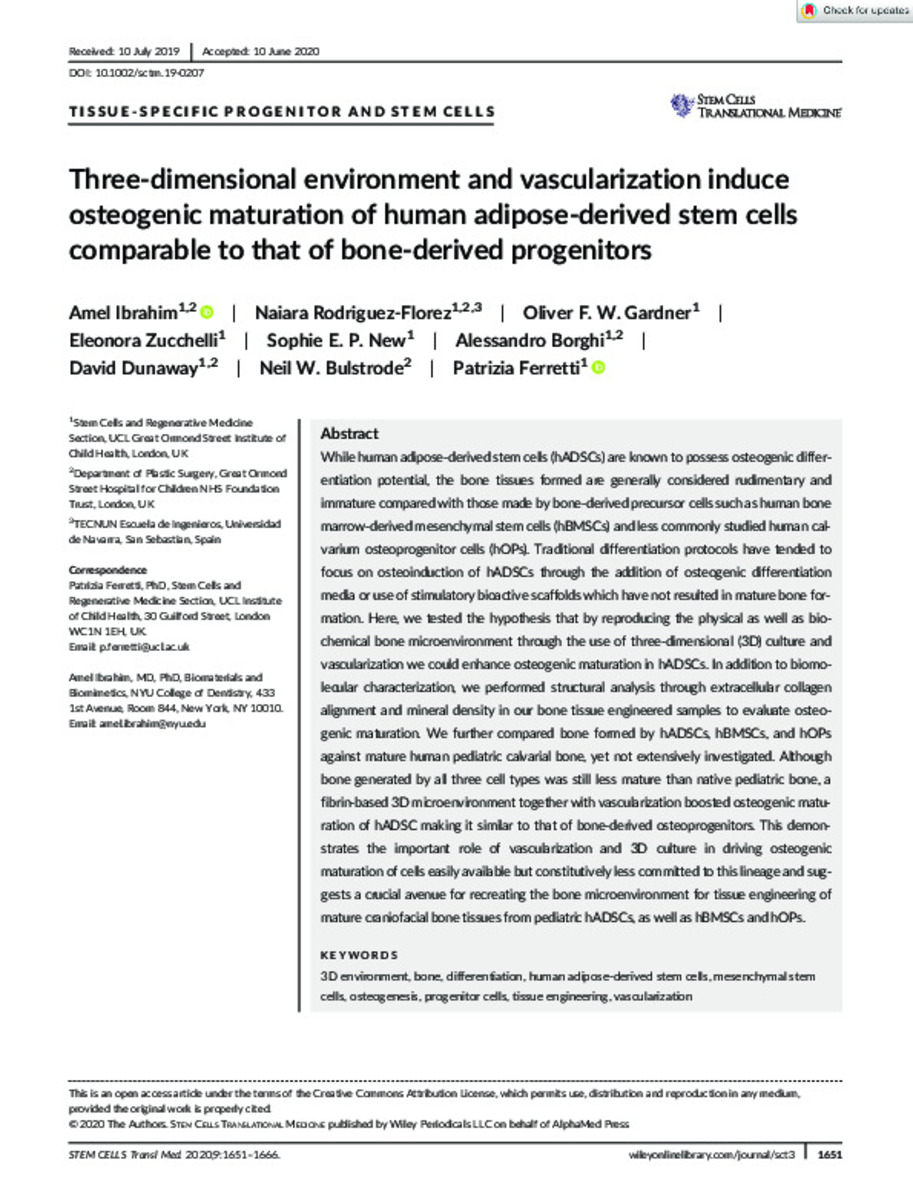Three-dimensionalenvironment and vascularization induce osteogenic maturation of human adipose-derived stem cells comparable to that of bone-derived progenitors
Keywords:
3D environment
Bone
Differentiation
Human adipose-derived stem c
Note:
This is an open access article under the terms of the Creative Commons Attribution License, which permits use, distribution and reproduction in any medium,
provided the original work is properly cited.
Citation:
Ibrahim, A. (Amel); Rodriguez-Florez, N. (Naiara); Gardner, O.F.W. (Oliver F.W.); et al. "Three-dimensionalenvironment and vascularization induce osteogenic maturation of human adipose-derived stem cells comparable to that of bone-derived progenitors". Stem cells translational medicine. 9 (12), 2020, 1651 - 1666
Statistics and impact
0 citas en

Items in Dadun are protected by copyright, with all rights reserved, unless otherwise indicated.







